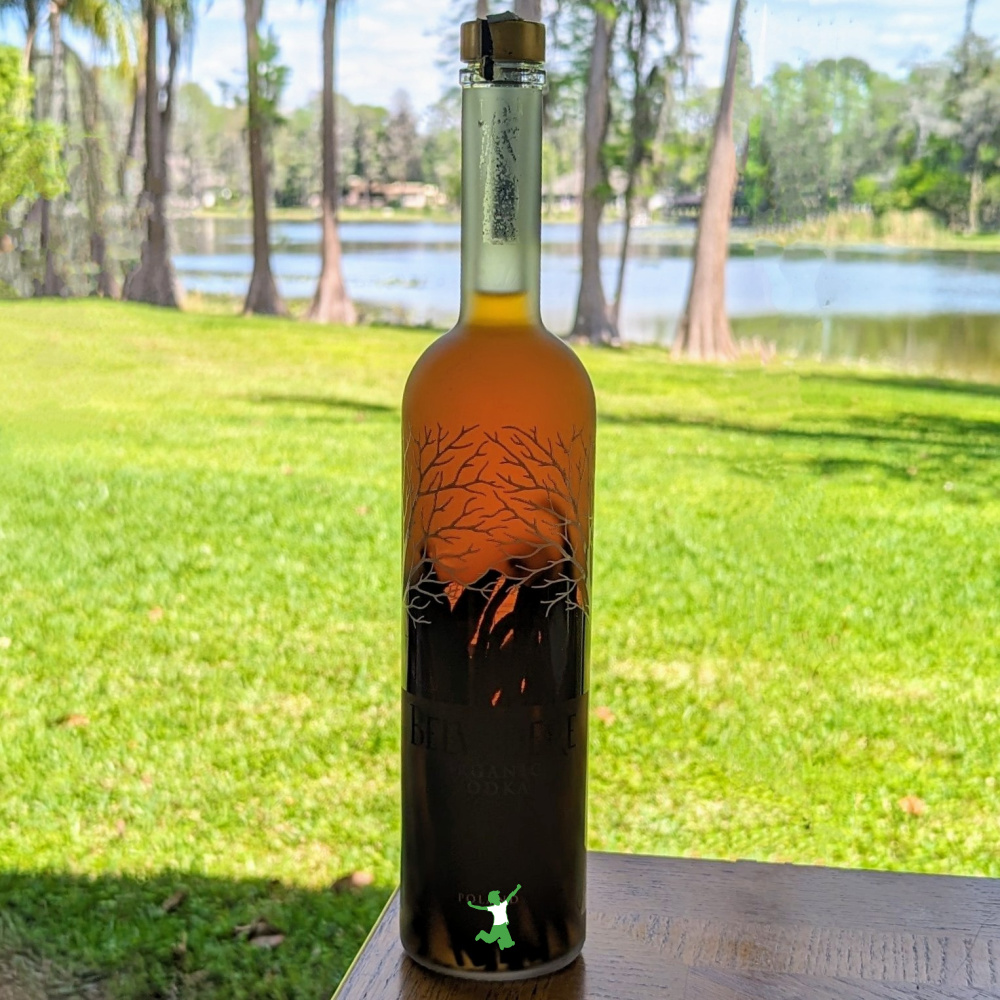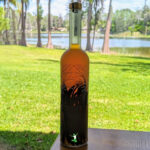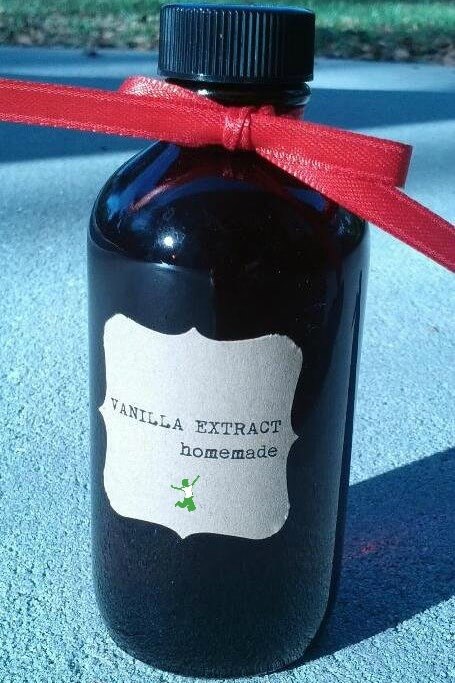
One of the most lovely gifts I’ve ever received during the Holidays was a bottle of homemade vanilla extract. The picture is shown above. I was very touched because I really appreciate the thoughtfulness of handmade gifts.
In addition, anyone who spends a lot of time in the kitchen knows that vanilla is a very expensive flavoring that is used in so many recipes!
In fact, vanilla is the second most expensive spice after saffron due to the intensive labor required to grow the vanilla seed pods. Could this be why saffron rice is far less popular than plain ‘ole yellow rice?
Certainly, this is the case with vanilla extract. The cost is a big reason why food manufacturers commonly use fake vanilla flavoring instead of the real thing.
Which Type of Vanilla Beans Makes the Best Extract?
My friend Lindsay prepared several test batches of vanilla extract to decide which she thought tasted best to use for gifts.
She tried several different types of vanilla beans before settling on Near Gourmet Bourbon Vanilla Beans. These beans are native to the island of Madagascar just off the coast of Africa. “Near Gourmet” means that they actually split on the vine (Grade B) or during the curing process.
Commercial vanilla extract manufacturers prefer “splits” because often they have a higher vanillin content. Typically, this is 0.23 grams of vanillin per 100 ml versus the usual 0.18 grams per 100 ml for high-quality extract grade beans.
In addition, these vanilla beans have a higher moisture content than the typical beans used to make commercial vanilla extract.
The difference is roughly 30% versus 20% for commercial beans. If these beans hadn’t split at some point along the way, they would be considered gourmet grade (Grade A), which are more expensive.
Is Organic Necessary when making Vanilla Extract?
Lindsay’s research on vanilla beans also turned up information on the production of vanilla beans. She was delighted to learn that nearly all vanilla beans are grown without the use of synthetic fertilizers or pesticides. The reasons are threefold.
First, vanilla only requires a light composting of forest materials in order to thrive. Secondly, vanilla has few insect or animal predators as long as it is properly cultivated.
And finally, the mostly small farms that grow vanilla do not have the resources for chemical treatments. In addition, they cannot afford the expensive fair trade or organic certifications. (1)
As a result, Lindsay decided that paying the premium for organic vanilla beans was unnecessary.
Gluten-Free
If you decide to make vanilla extract to give as a gifts, then I would recommend using potato vodka. This will ensure a gluten free product. It will be usable even for those friends and family who are avoiding gluten or have a grain allergy.
Lindsay was kind enough to share her vanilla extract recipe with me and said it was fine to share here as well. This ridiculously easy method on how to make vanilla extract will taste far better than even the organic stuff at the store. It will possibly save you quite a bit of money too!
Make Twice as Much with this Trick
I’ve discovered a trick to save even more money when you make your own vanilla.
When your new bottle of extract is ready, pour off about half into small bottles (see below) and refill the big bottle with fresh vodka. Leave for the designated period of time one more time.
You will get two large bottles of vanilla extract for the price of one set of vanilla beans!

Homemade Vanilla Extract Recipe
This homemade vanilla extract recipe is ridiculously easy and will save you lots with this simple DIY method. Gluten free too and makes a great gift!
Ingredients
- 1 bottle potato vodka 750 ml (25 ounces)
- 18 vanilla beans “near gourmet” splits
Instructions
-
Place the vanilla beans straight into the bottle of vodka and replace the cap. Slicing each bean lengthwise first is fine but isn’t necessary and doesn’t seem to make much of a difference to the flavor.
-
Note that each bean should be fully submerged in the vodka.
-
Leave the vodka to slowly extract the vanilla flavor from the beans for at least 6 weeks in a dimly lit place like a cabinet that isn’t too warm. Ideally, 8 weeks is required for the majority of the vanilla flavor to be extracted from the beans. Gently shaking the bottle occasionally will help move the process along.
-
After 6-8 weeks, carefully remove the vanilla beans and pour the vanilla extract into 8 oz amber bottles if you will be giving to family or friends. If making the vanilla extract for yourself, simply place the vodka bottle into the pantry (appropriately labeled) for your personal use.
Recipe Notes
If you use a different size bottle of vodka, note that you need 6 whole vanilla beans for every 8 ounces of vodka to make vanilla extract. Adjust the number of beans as necessary.









I made them as gifts this year and yes, quite a bit of vanilla to make legal grade extract. For organic, fair trade, grain free vanilla, it was still a fraction of the cost!
I want to do this for Christmas next year!! Thank you!
a neighbor gave me some for Christmas.
I’ve been making my own vanilla extract for 6 years now. I always use a good tasting vodka to produce the best tasting extract like Ketel One, so use a vodka that you like the taste of. I had no idea that vanilla beans are generally considered untreated, so thank you for the information Sarah! My source for buying organic vanilla bean pods is Mountain Rose Herbs, which are reasonably priced. I buy 1 oz. at a time (which is about 8 long pods in a glass tube) for $7.00. I just received my latest shipment last week, which included my restocking of vanilla pods. This is the link in case any of you are interested:
I forgot to mention, I leave the split bean pods in the jar of vodka. I don’t remove them as it’s not necessary.
Is it dark or clear? What gives it the dark color? And I noticed my Madagascar vanilla has sugar in it.
it will be amber color.
any alcohol-free recipes to make it?
You need the alcohol to extract the flavor. Glycerine works about half as well, literally. Don’t be afraid of the alcohol; it amounts to so small an amount in whatever you are consuming, and it bakes out of baked goods, steams out of hot beverages.
@Sarah, when you say 6 – 8 whole beans for every 8 oz. vodka do you mean whole bean pods or is one suppose to remove the beans from the pod and use those individual whole beans? So basically, what I’m asking is, are you counting individual beans from a pod or the entire pod when you recommend 6 – 8 whole beans?
Use whole pods. I split them with a knife (but you don’t have to), leaving the caviar intact, and drop it into the glass jar and add vodka to the top. when it gets starts to get low, I add another bean pod, or more, and top off with vodka. You can have a perpetual bottle of vanilla extract for the rest of your life.
Yep, I’ve also seen another one submitted a couple of years back by Modern Alternative Mama (that may be the first post at the top, David’sKate, who owns it, but not sure). That one says to leave it at least one month, preferably six. Haven’t tried it yet myself… and I do have some organic vanilla beans around… had them for a while, though, don’t know if they expire…
Is the homemade vanilla gluten free?
Read the article! lol
Absolutely easy and delicious.